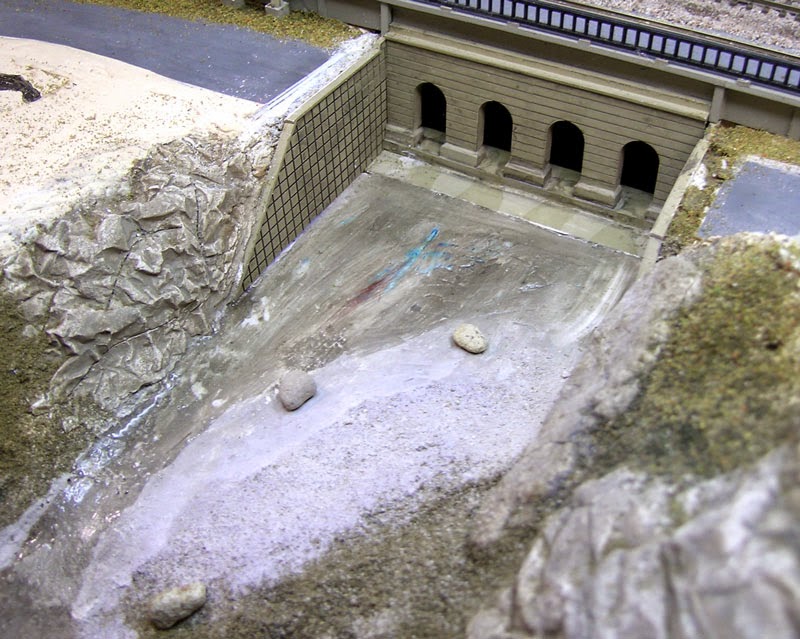Simulating water has always been a challenge for me. Modelers use a number of methods and I've tried several of them with mixed results. I had tied the 2-part resin method on an earlier module but was unhappy with that result. It had absorbed some of the surrounding color and I could not get the small bubbles out before it hardened.
Then on a home layout I tried Woodland Scenic realistic water after painting the bottom surfaces with blended green, blue, and brown acrylic paints. This had better results on flat surfaces but I was not really happy with the effect of water running down hill.
This time I tried using acrylic gloss medium and also Woodland Scenic water effects to give the running water some texture.
Using a scrap of Plexiglas, I experimented with both these products to seen how they would interact with each other and with acrylic paints. Also I wanted to practice working with this technique before actually applying it to the module.
Prior to adding the simulated water, I added some more rocks to the river bed. From some coarse sand I selected grains that were more rounded like rocks in a river bed normally are. I probably could have added many more than I did but put enough in to get the effect I wanted.
The moment came to actually apply some of the gloss medium to river bed. I had shaped the river bed to have a low spots in the center and let the gloss medium find it own way through the contours. The gloss medium as shown in this photo goes on white before drying clear.
I put down 1 layer of the gloss medium and let that dry. Then I went over the deeper areas with a very dilute mixture of green and blue acrylic paints. After the acrylic paint had dried, I added another coat of gloss medium.
Where I wanted to simulate running water I brushed on the water effects product. Using the brush and a bamboo skewer, I creating some wavy texture. This was done where the streams were running down hill and also around the rocks. This product also goes on white and looks terrible at first as shown in this photo but will dry clear.
Having seen this trick somewhere I had to try it. After the water effects product had dried, I applied small amounts of white paint to the ridges left by the water effects with the pointed end of a bamboo skewer to simulate white water. These are pointed out in this photo by blue arrows.
After adding one more coat of gloss medium, here is a looking down view of the completed river water with the bridges still removed. I will still be adding some rocks and other details before re-installing the bridges.
Of the methods I've tried for modeling water I like this one the best, particularly for running water. It's not the fastest but seems to offer the most control.

















